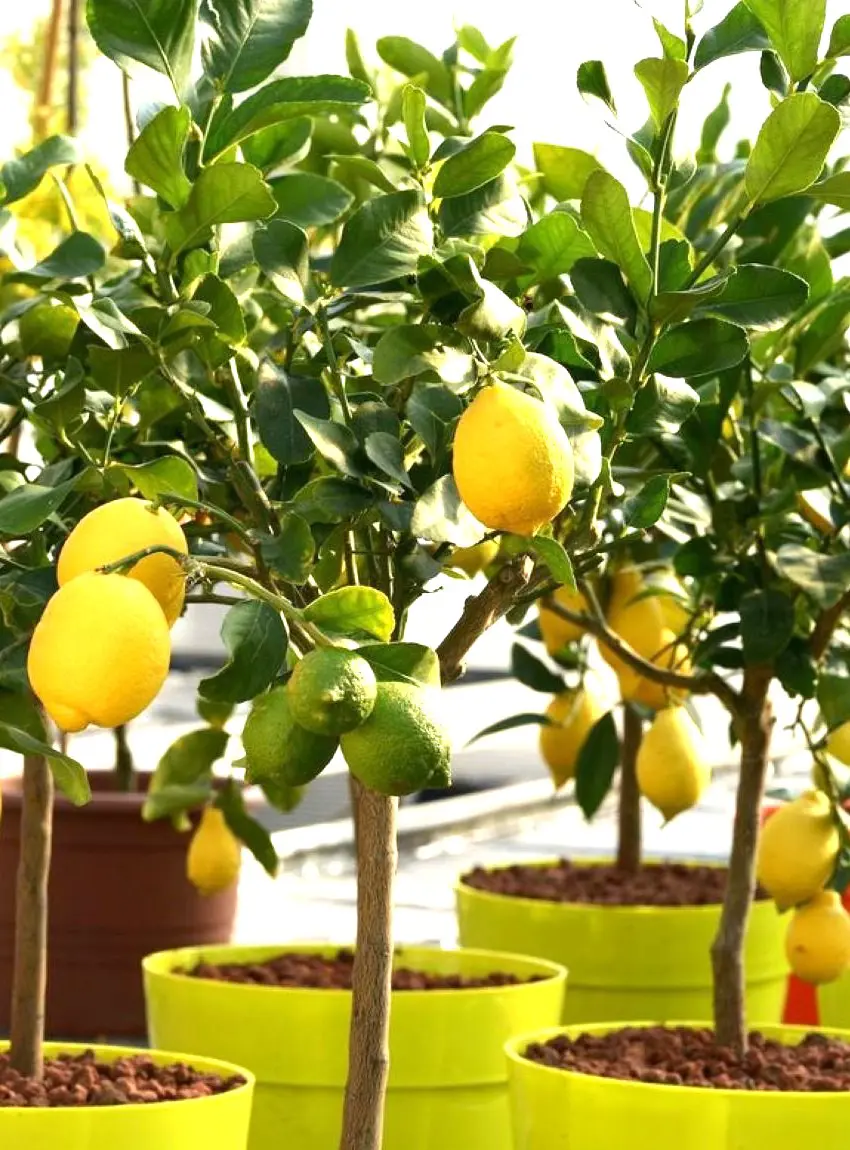Pruning a lemon tree is crucial for promoting better yield and maintaining its health. By understanding the proper techniques and timing for pruning, you can enhance fruit production and ensure your tree thrives.
This article will provide a step-by-step guide on how to prune a lemon tree effectively, focusing on the best practices to maximize yield and keep your tree in optimal condition.
Whether you're a novice gardener or an experienced horticulturist, these tips will help you achieve a bountiful harvest.
What is Pruning?
Pruning involves the selective removal of certain parts of a plant, such as branches, buds, or roots. This horticultural technique is used to shape plants, remove dead or diseased wood, and encourage healthy growth.
Pruning can be applied to various plants, including fruit trees like lemon trees, to improve their overall structure and productivity.
Benefits of Pruning Lemon Trees
Pruning lemon trees offers numerous benefits, including:
- Enhanced Air Circulation and Sunlight Penetration: Removing excess branches and foliage allows more sunlight to reach the inner parts of the tree. This enhances photosynthesis and promotes better fruit development.
- Disease Prevention: Pruning helps eliminate dead, diseased, or damaged branches, reducing the risk of infections and pests. Improved air circulation also minimizes fungal growth.
- Improved Fruit Quality: Regular pruning directs the tree's energy towards fruit production, resulting in larger, juicier lemons. It also prevents overcrowding, allowing each fruit to develop fully.
- Tree Shape and Size Management: Pruning maintains a manageable size and shape for the tree, making it easier to harvest fruits and perform maintenance tasks.
- Rejuvenation: Pruning stimulates new growth, rejuvenating older trees and extending their productive lifespan.
When to Prune Lemon Trees
Timing is crucial when it comes to pruning lemon trees. Pruning at the right time ensures optimal growth and fruit production. Here are the ideal periods for pruning:
Late Winter to Early Spring (Before Bud Break)
Prune lemon trees just before the new growth starts in late winter or early spring. This timing allows the tree to heal quickly and promotes vigorous growth during the growing season. The dormant period is ideal for pruning because:
- Reduced Stress: The tree is less active, minimizing stress and the risk of shock.
- Disease Prevention: Fewer pests and pathogens are active during this period, reducing the likelihood of infections.
- Clear Visibility: Without leaves, it's easier to see the tree's structure and make precise cuts.
After Harvesting

Pruning after harvesting the lemons ensures that the tree's energy is directed towards new growth and preparing for the next fruiting cycle. This post-harvest period is beneficial because:
- Energy Redirection: The tree can focus its resources on developing new shoots and buds instead of maintaining old or damaged branches.
- Balanced Growth: Pruning at this time helps maintain a balance between vegetative growth and fruit production for the next cycle.
- Improved Air Circulation: Removing spent branches and thinning the canopy improves airflow, reducing the risk of fungal diseases.
Avoid Extreme Weather Conditions
It's important to avoid pruning during extreme weather conditions, such as frost or intense heat, as it can stress the tree and hinder its recovery. Consider the following points:
- Frost Damage: Pruning during frost periods can expose the tree to cold damage, slowing down the healing process.
- Heat Stress: Intense heat can cause excessive water loss through the pruning wounds, stressing the tree and impeding growth.
- Optimal Healing: Mild, stable weather conditions are ideal for pruning, as they support faster wound healing and reduce the risk of stress.
By adhering to these guidelines, you can ensure that your lemon tree remains healthy and productive, providing you with an abundant yield of delicious lemons.
What to Do Before Getting Started
Before you start pruning your lemon tree, there are several preparatory steps to ensure a successful and efficient process:
- Gather the Right Tools: Ensure you have the necessary tools, including pruning shears, loppers, a pruning saw, and gloves. Sterilize your tools to prevent the spread of diseases.
- Assess the Tree: Take a close look at your lemon tree to identify areas that need pruning. Look for dead, diseased, or damaged branches, as well as any overcrowded or crossing branches.
- Plan Your Cuts: Have a clear plan in mind before making any cuts. Decide which branches need to be removed and the overall shape you want to achieve.
- Choose a Suitable Day: Pick a day with mild weather conditions. Avoid pruning on extremely hot or cold days to prevent stress on the tree.
- Understand the Growth Habit: Familiarize yourself with the natural growth habit of lemon trees. This knowledge will help you make informed decisions about which branches to prune.
Safety Measures
Pruning can be a physically demanding task, so it's essential to prioritize safety:
- Wear Protective Gear: Use gloves, safety glasses, and long sleeves to protect yourself from thorns, sharp branches, and debris.
- Use the Right Tools: Ensure your tools are sharp and in good condition to make clean cuts and reduce the risk of injury.
- Be Cautious with Ladders: If you need to use a ladder, make sure it is stable and placed on level ground. Have someone assist you if possible.
- Take Breaks: Pruning can be tiring, especially for larger trees. Take breaks to avoid fatigue and maintain focus.
- Dispose of Debris Properly: Collect and dispose of pruned branches and leaves properly to prevent the spread of diseases and pests.
How to Prune Outdoor Lemon Trees

Pruning outdoor lemon trees requires careful attention to detail. Follow these steps to ensure a successful pruning process:
Step 1: Remove Dead, Diseased, and Damaged Wood
Begin by identifying and removing any dead, diseased, or damaged branches. These branches can be identified by their discolored or brittle appearance. Cut them back to healthy wood or the main stem using sharp pruning shears or a saw.
Step 2: Thin Out Overcrowded Branches
Next, thin out any overcrowded branches to improve air circulation and sunlight penetration. Focus on removing branches that are crossing or rubbing against each other. Make clean cuts just above a bud or lateral branch to encourage new growth.
Step 3: Shape the Tree
Shape the tree by selectively removing branches to achieve a balanced and open canopy. Aim for a shape that allows sunlight to reach all parts of the tree. Avoid removing more than 20-30% of the tree's branches in a single pruning session to prevent stress.
Step 4: Shorten Long Branches
Shorten any excessively long branches to maintain a compact and manageable size. Make the cut just above a bud or lateral branch, ensuring that the remaining branch is at least one-third the diameter of the cut.
Step 5: Remove Suckers and Water Sprouts
Suckers and water sprouts are vigorous shoots that grow from the base of the tree or along the branches. These shoots can divert energy away from fruit production. Remove them as soon as they appear, cutting them back to the point of origin.
Step 6: Clean Up
After completing the pruning process, collect and dispose of all pruned branches and debris. This helps prevent the spread of diseases and pests.
How to Prune Container Lemon Trees?

Pruning container lemon trees follows a similar process to outdoor trees, with some additional considerations:
Step 1: Assess the Tree
Start by assessing the overall health and structure of your container lemon tree. Look for dead, diseased, or damaged branches, as well as any overcrowded or crossing branches.
Step 2: Remove Dead, Diseased, and Damaged Wood
Identify and remove any dead, diseased, or damaged branches. Use sharp pruning shears to make clean cuts just above a healthy bud or lateral branch.
Step 3: Thin Out Overcrowded Branches
Thinning out overcrowded branches is crucial for container lemon trees to ensure proper air circulation and sunlight penetration. Remove branches that are crossing or rubbing against each other.
Step 4: Shape the Tree
Shape the tree by selectively removing branches to achieve a balanced and open canopy. Aim for a compact shape that allows sunlight to reach all parts of the tree.
Step 5: Shorten Long Branches
Shorten any excessively long branches to maintain a manageable size. Make the cut just above a bud or lateral branch, ensuring that the remaining branch is at least one-third the diameter of the cut.
Step 6: Remove Suckers and Water Sprouts
Remove any suckers or water sprouts that appear at the base of the tree or along the branches. These shoots can divert energy away from fruit production.
Step 7: Consider Root Pruning
Container lemon trees may require root pruning to prevent them from becoming root-bound. Carefully remove the tree from its container and trim back the outer roots by about one-third. Replant the tree in fresh soil and a slightly larger container if necessary.
Step 8: Regular Maintenance
Regularly check your container lemon tree for any signs of pests or diseases. Prune as needed to maintain the desired shape and size.








